Studies from Maine to New York will help investigators gain a better understanding of effects of ocean changes on iconic Northeast marine life
New York, NY, September 7, 2016 - NOAA’s Ocean Acidification Program (OAP) and the Northeast Sea Grant Programs joined together to prioritize and fund new research on how ocean acidification is affecting marine life including lobsters, clams, oysters, mussels and sand lance that are so important to the Northeast region. Funding includes $800,000 in federal funds from the two programs with an additional $400,000 non-federal match.
NOAA and Sea Grant drew on the work of the Northeast Coastal Acidification Network to set these priorities. The Network is made up of concerned fishermen, scientists, resource managers, and representatives from federal and state agencies who work together to identify critical vulnerabilities in the northeast, including regionally important and economically significant marine resources that are vital to the many livelihoods and the culture of New England.
“The lobster industry in New England is valued at close to $500 million for annual landings alone (Maine Department of Marine Resources) and yet we know very little about how ocean acidification may affect this species,” said Libby Jewett, director of the NOAA Ocean Acidification Program. “Teaming up with the NOAA Sea Grant Program to fund these projects should help move the needle forward in our understanding and, as a result, enable broader resilience in the region.”
Burning fossil fuels releases large amounts of carbon dioxide into our atmosphere, a part of which is absorbed by the ocean. This increase in carbon dioxide in the ocean is causing a change in ocean chemistry called ocean acidification. Learning how changes in ocean chemistry affect New England seafood is important to fisherman and all those whose enjoyment and culture is connected to the sea.
“This initiative is an example of how Sea Grant programs are able to engage the expertise of the university research community to answer complex research needs of local, state and regional stakeholders,” said Jonathan Pennock, director of the NOAA National Sea Grant College Program. “Sea Grant is committed to transitioning research findings back to fishing, management and business sectors that will be affected by and need to adapt to ocean acidification.”
In New York, two studies will be conducted:
Dianna Padilla, a PhD researcher from Stony Brook University’s Department of Ecology and Evolution, has been awarded $185,435 to explore whether blue mussels can adapt to changes in ocean chemistry. The investigators will examine mussels throughout their life cycles, across multiple generations, to assess their ability to adapt, and determine if mussels from certain areas of Long Island Sound are better able to cope with varying acidification conditions. This information can then be used to help shellfish growers determine where to collect mussels to spawn for seed, and improve stocks of mussels for aquaculture in the long run."
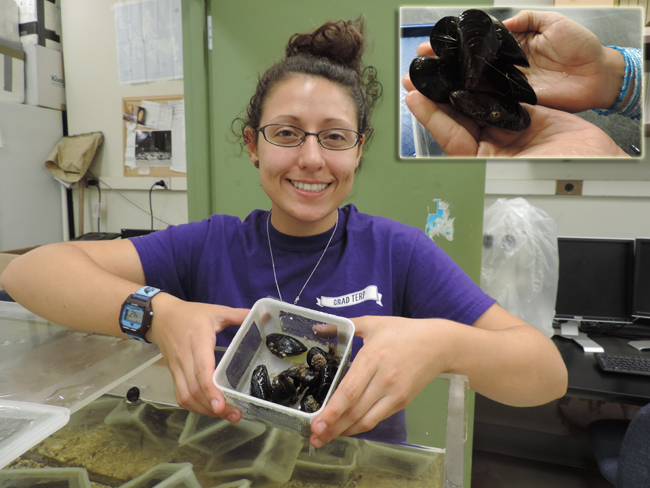
Blue mussels were collected from different regions around Long Island Sound where they currently experience different environmental conditions. Allison Rugila (pictured) is a graduate student in Ecology and Evolution and is the Sea Grant Fellow on this New York Sea Grant project. Photos: Courtesy of Dianna Padilla
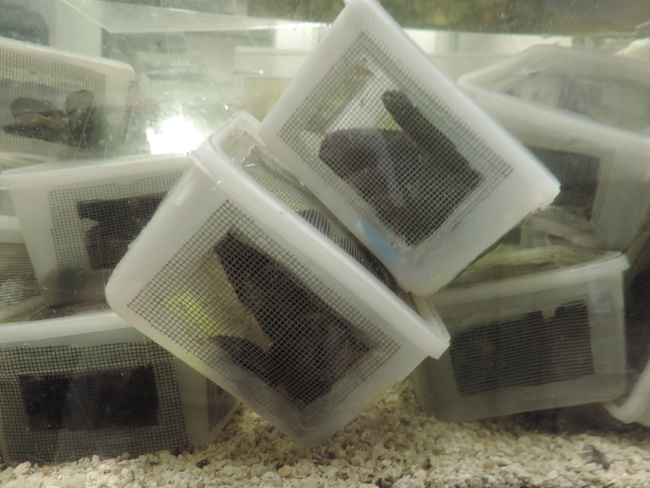
Mussels from different sites were collected and are conditioning in the lab so that they will spawn and produce larvae for experiments on the effects of ocean acidification on all life stages of the blue mussel over two generations. Photo: Courtesy of Dianna Padilla
Scientists at Stony Brook University’s School of Marine and Atmospheric Sciences under the leadership of Bassem Allam, PhD, have received $199,927 to compare how different bivalves respond to acidification.
Bivalves such as oysters and clams, represent the most important marine
resource in several Northeast states and production of bivalve seed has
recently suffered significant losses due to ocean acidification in some
of the largest hatcheries in the nation. Researchers will identify
genetic features associated with resilience in an aim to provide the
aquaculture industry with tools to select resilient shellfish stocks.
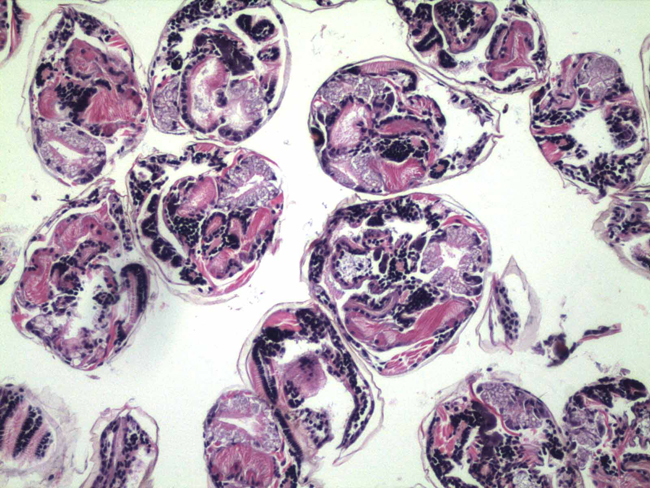
Under the microscope: Histological sections of hard clam juveniles. Photo: Courtesy of Bassem Allam
“Global warming will increase CO2 levels in the ocean and make the ocean more acidic. These effects will probably be accentuated in coastal waters as compared to the open ocean,” said William Wise, director of New York Sea Grant. “This work by Padilla and Allam will identify the vulnerabilities to OA of ecologically and economically important local shellfish species in New York, and assess their relative ability to adapt to these impending environmental changes. New York Sea Grant is pleased to help support this important research.”
Other research funded under this NOAA initiative in the U.S. Northeast:
Richard Wahle, PhD, at University of Maine and his collaborators at Bigelow Laboratory for Ocean Sciences and the University of Prince Edward Island have received a grant of $200,000 to study how young lobster respond to ocean warming and acidification across New England. With 90 percent of the landings harvested from the Gulf of Maine, climate change has already brought about major shifts in the distribution and timing of New England’s lobster fishing. Wahle’s team will look at the behavior and physiology of larval lobster in different temperature and acidification conditions that mimic those expected in the next century in the Northeast. This information will help policy makers and lobster fishers to manage the fishery’s future.
Hannes Baumann, PhD, and colleagues at the University of Connecticut have received a grant of $198,393 to study the sensitivity of the Northern sand lance to ocean warming, acidification and low oxygen. Unbeknownst to many visitors to Stellwagen Bank National Marine Sanctuary, who marvel at humpback whales, seals, bluefin tuna, and marine birds, most of these animals concentrate in the sanctuary because of the sand lance. “Sand lance are a small forage fish that we call the ‘backbone of the sanctuary’ because they are at the base of the food chain,” said Baumann. “Despite their importance to the ecosystem, their sensitivity to climate and ocean change is unknown.”
This joint effort is part of a larger focus of the OAP and a number of the 33 state Sea Grant programs across the country that are investing in ocean and coastal acidification research to help coastal communities better adapt to ocean change.
The complete list of the projects can be found at these links:
In Photos: NOAA / Sea Grant Ocean Acidification Research
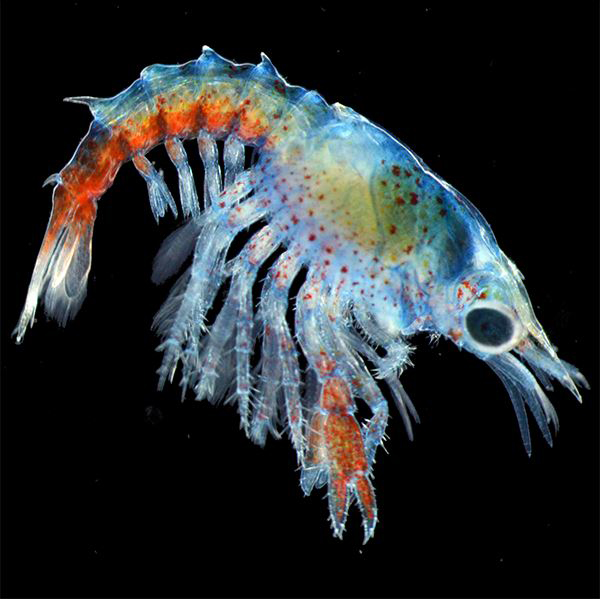
Shellfish harvest and catch is integral to the communities and culture of New England. Here, a live three week old lobster is captured at the University of Maine, where research is taking place to understand how increasingly warm and acidic waters will affect these and other important marine species.
Photo: Jessica Waller, University of Maine
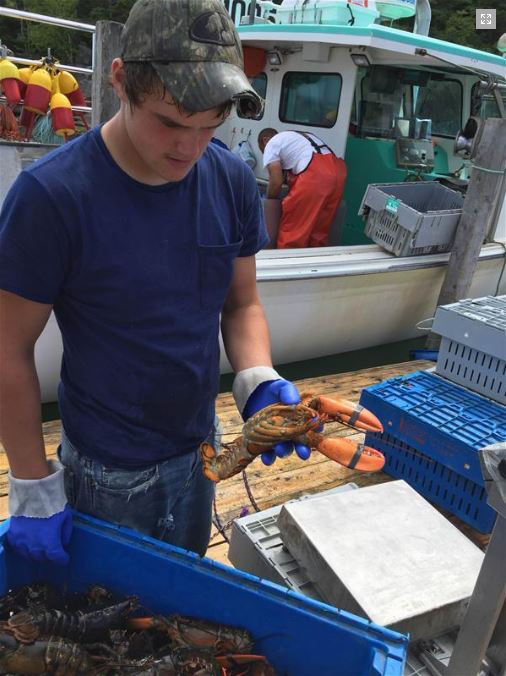
A peek at the daily catch at Greenhead Lobster in Stonington, Maine. Lobster fishing is integral to this community, and accounts for 90% of the landings harvested from the Gulf of Maine.
Photo: Libby Jewett, NOAA OA Program
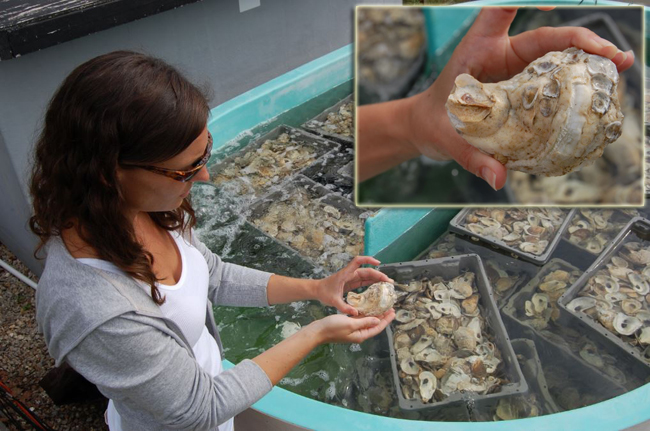
New Hampshire Sea Grant is conducting research they hope will lead to ocean acidification-resistant oysters.
Photo: Becky Zeiber, New Hampshire Sea Grant
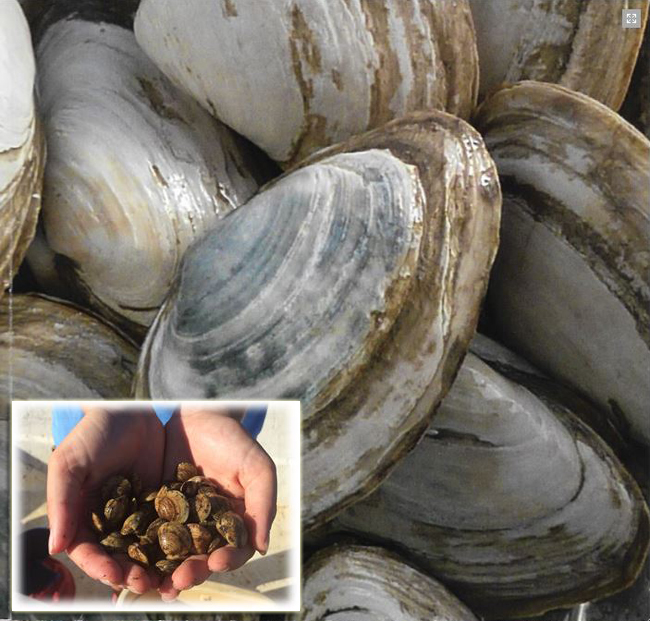
Research being conducted by New Hampshire Sea Grant is focused on understanding the effects of ocean acidification on clams.
Photo: Michael Chambers, New Hampshire Sea Grant
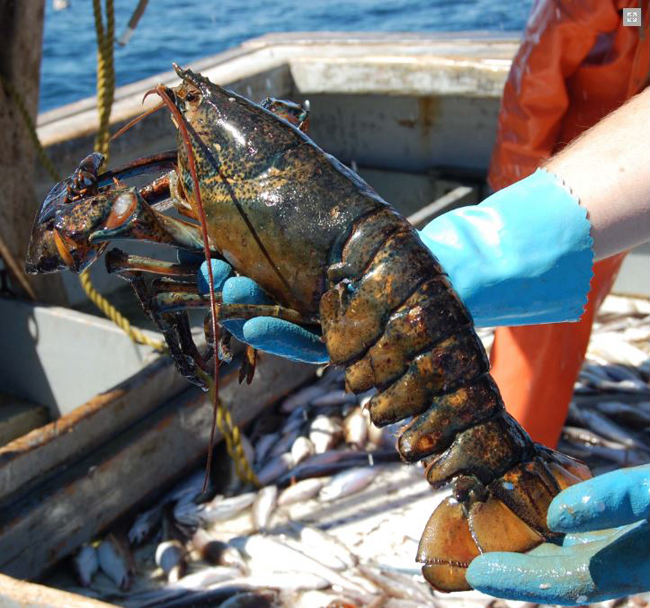
Sea Grant is supporting research to understand the effects of ocean acidification and temperature on lobster development.
Photo: Becky Zeiber, New Hampshire Sea Grant
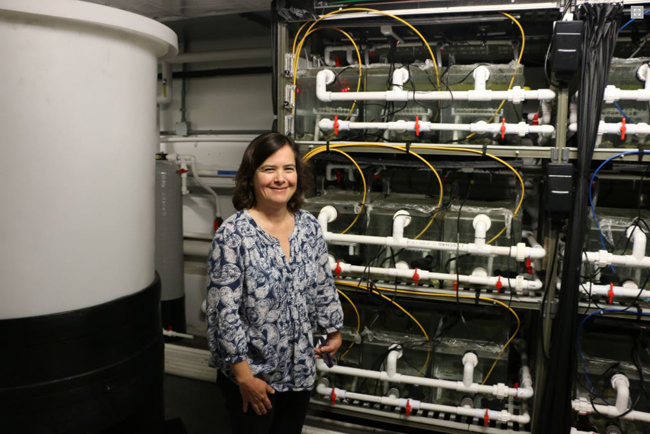
MIT Sea Grant coastal ecologist
Carolina Bastidas is working with MIT Sea Grant funded researcher
Justin Reis to study how ocean acidification and temperature affects shell growth. They are using 27 tanks, each with carefully calibrated temperature and carbon dioxide controls to grow oysters under different conditions. The oysters are then photographed using a scanning electron microscope to determine how the surface of the shell has changed. More via
MIT Sea Grant.
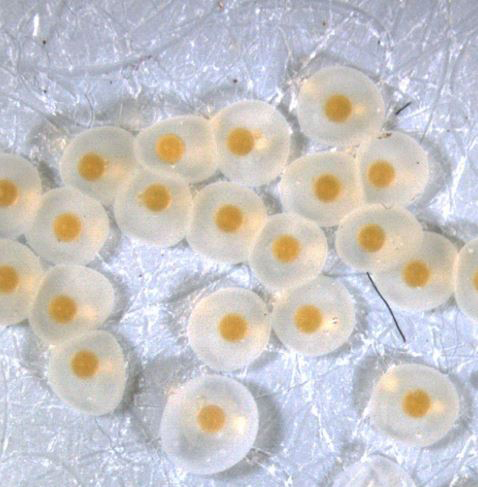
Newly fertilized sand lance eggs, that measure just 1 mm in diameter. Sand lance are a small fish that have been referred to as the ‘backbone’ of Stellwagen Bank National Marine Sanctuary.
Photo: Hannes Baumann, University of Connecticut
More Info: New York Sea Grant
New York Sea Grant (NYSG), a cooperative program of Cornell University
and the State University of New York, is one of 33 university-based
programs under the National Sea Grant College Program (NSGCP) of the
National Oceanic and Atmospheric Administration (NOAA). The NSGCP
engages this network of the nation’s top universities in conducting
scientific research, education, training and extension projects designed
to foster science-based decisions about the use and conservation of our
aquatic resources. Through its statewide network of integrated
services, NYSG has been promoting coastal vitality, environmental
sustainability, and citizen awareness about the State’s marine and Great
Lakes resources since 1971.
New York Sea Grant maintains Great Lakes offices at SUNY Buffalo, the
Wayne County Cooperative Extension office in Newark and at SUNY Oswego.
In the State's marine waters, NYSG has offices at Stony Brook University
and Stony Brook Manhattan, in the Hudson Valley through Cooperative
Extension in Kingston and at Brooklyn College.
For updates on Sea Grant activities:
www.nyseagrant.org has RSS,
Facebook,
Twitter, and
YouTube links. NYSG also offers a free e-list sign up via
www.nyseagrant.org/coastlines for its flagship publication,
NY Coastlines/Currents, which is published several times a year.